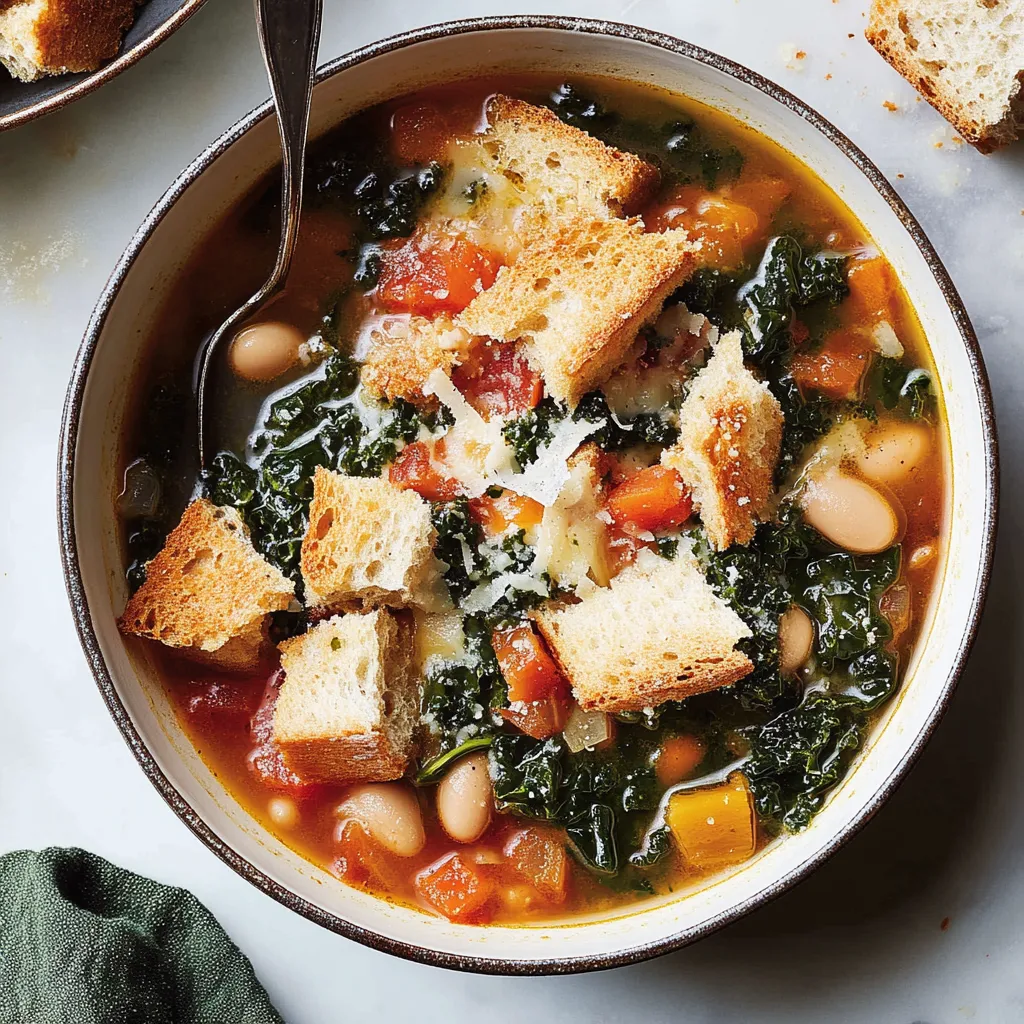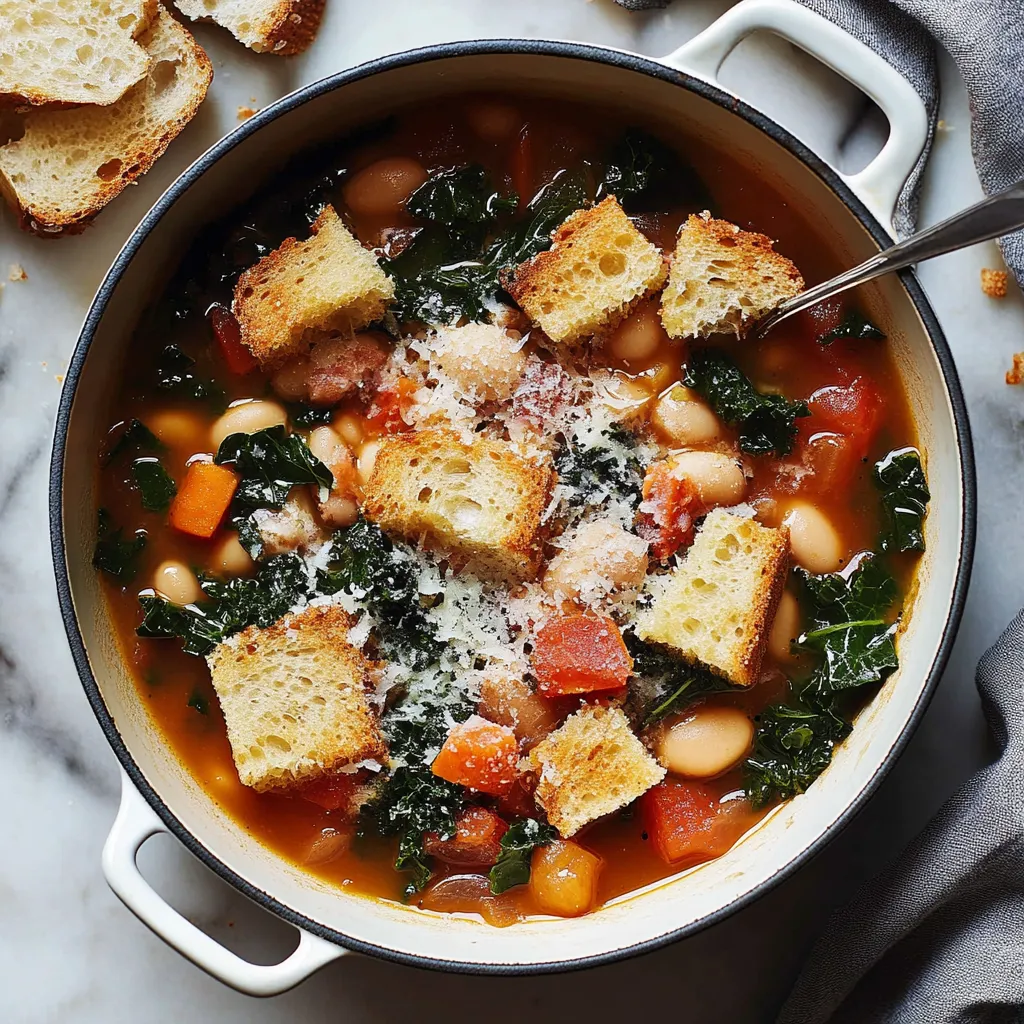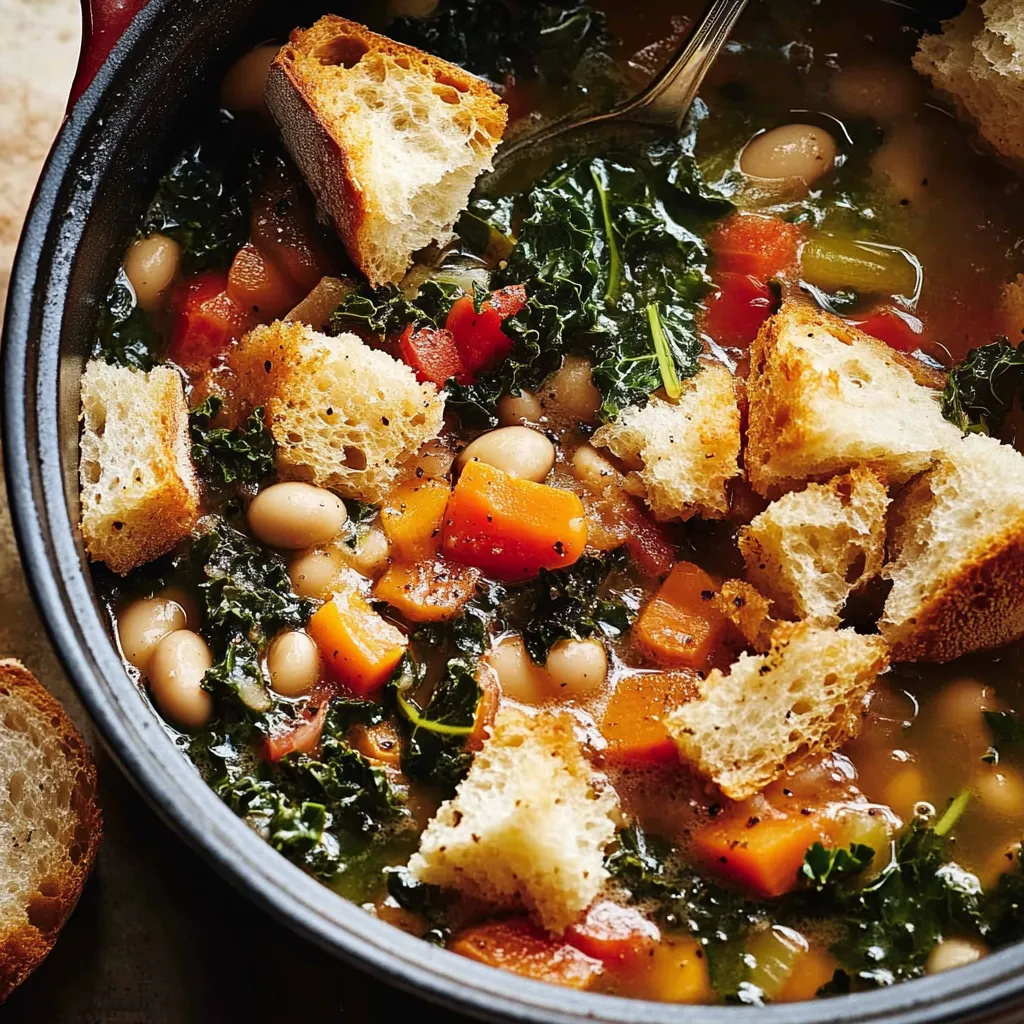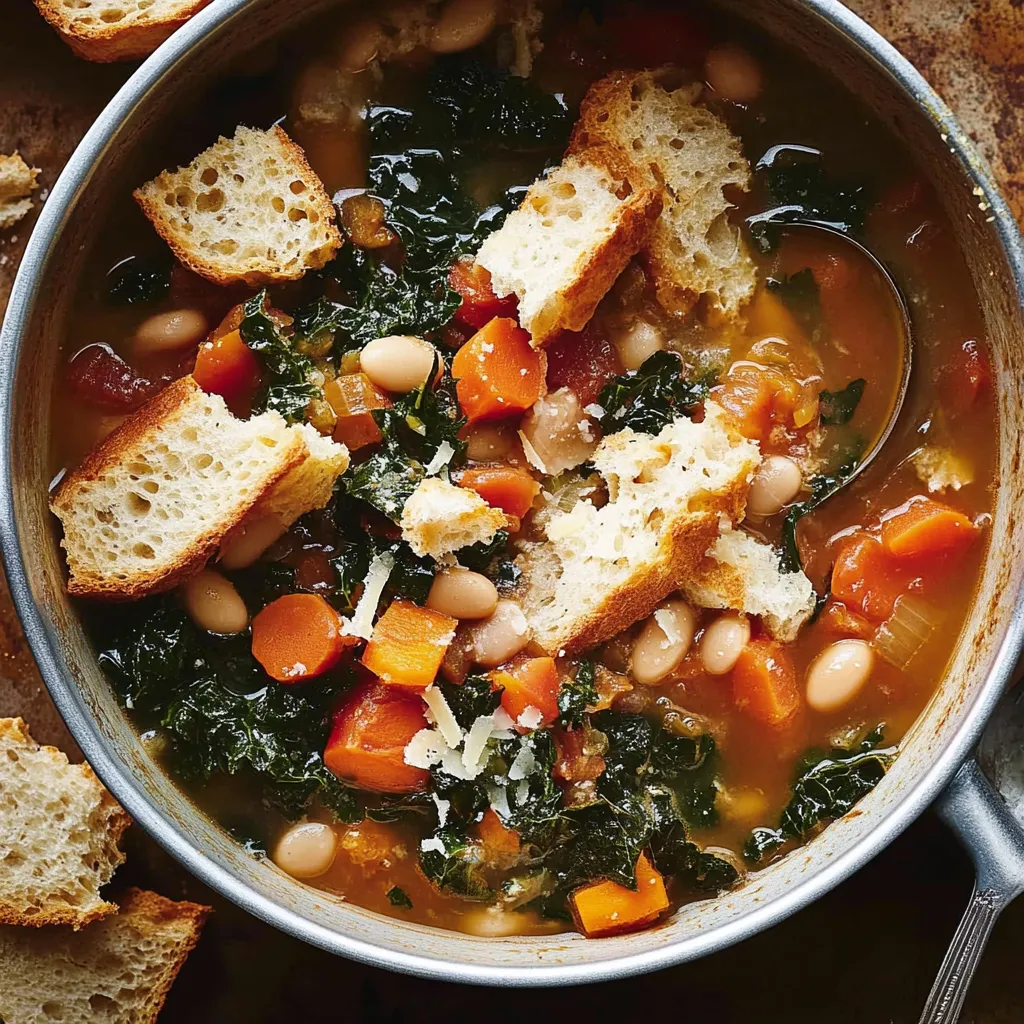 Pin it
Pin it
Ribollita, which means "reheated" in Italian, turns basic ingredients into a filling, comforting soup that showcases the best of Tuscan country cooking. This clever dish shows how yesterday's bread and simple veggies can make something truly amazing.
After diving into traditional Tuscan cooking methods, I've figured out that real ribollita magic happens when you take your time building layers of flavor and pick the freshest simple ingredients you can find.
Key Components
- Stale Bread: Rustic country loaf or sourdough
- Cannellini Beans: The classic white beans from Tuscany
- Lacinato Kale: Sometimes called dinosaur kale
- Premium Olive Oil: Grab your fanciest bottle for cooking and finishing
- Aromatic Rosemary: Gives that crucial herbal punch
- Cheese Rind: Makes the broth incredibly rich
- Garden Vegetables: Forms your flavor foundation
- Decent White Wine: Brings tang and balance
Step-By-Step Process
- Getting Bread Ready (15 minutes):
- Slice bread into chunky 1-inch pieces. Lay them out on a sheet pan. Toast until they're totally dry. Cool them down completely. Put aside for later.
- Making Flavor Base (12-15 minutes):
- Warm olive oil in a thick-bottomed pot. Toss in finely chopped onion, carrot, and celery. Cook them low and slow until soft. Sprinkle with salt to draw out juices. Give it a stir now and then so nothing browns. Mix in garlic at the last minute.
- Starting Your Soup (10 minutes):
- Toss in rosemary until you can smell it. Splash in the white wine. Let it bubble away until half gone. Dump in tomatoes with all their juice. Mix in beans and broth. Drop in your cheese rind. Bring everything to a gentle bubble.
- Letting Flavors Mix (20-25 minutes):
- Keep it bubbling gently. Stir once in a while. Let everything mingle together. Check if beans are soft enough. Throw in kale and cook until it wilts down. Fish out the cheese rind.
- Putting It All Together:
- Mix in toasted bread bit by bit. Fold everything together gently. Let the bread soak up the liquid. Make it as thick or thin as you want. Taste and add salt if needed. Finish with a good drizzle of your best olive oil.
 Pin it
Pin it
My biggest aha moment with this dish came when I realized ribollita needs to rest after cooking so the bread can fully soak up and blend with all the soup flavors.
Expert Kitchen Tricks
- Keep old cheese rinds in your freezer just for soup-making
- Use olive oil twice - once to cook and once to finish
- Chop all veggies the same size so they cook evenly
Fixing Common Problems
- Too Thick? Stir in warm broth a little at a time
- Too Runny? Add extra toasted bread cubes
- Soggy Bread? Next time, toast it more thoroughly
 Pin it
Pin it
Prepare Ahead Tips
- Cook the soup part without adding bread
- Keep bread in a separate container
- Don't mix in kale if you're saving it for tomorrow
Keeping It Fresh
- Keep base soup in fridge for up to 3 days
- Store bread at room temp
- Freeze soup by itself without bread
Different Ways To Make It
- Some areas throw in pancetta for extra flavor
- You can swap kale for whatever greens are in season
- Certain versions include chunky potato pieces
This Ribollita shows off the heart of Tuscan cooking - turning simple ingredients into something spectacular through time and skill. Served for lunch or dinner, it's a reminder that fantastic food often comes from working with what you've got. Every spoonful tells a story of making do and traditions handed down through countless Italian kitchens over the years.
 Pin it
Pin it
Frequently Asked Questions
- → Is stale bread better for this?
- Yes! But if all you’ve got is fresh bread, just bake it for 10-20 minutes to dry it out.
- → What does Parmesan rind do?
- It gives the broth a richer, deeper taste as it simmers.
- → How thick should this dish be?
- It’s totally up to you—more bread makes it thicker!
- → Can other greens replace kale?
- Sure, pick sturdy greens, though lacinato kale keeps it traditional.
- → What makes this version authentic?
- Adding stale bread and cannellini beans are essential traditional touches.
